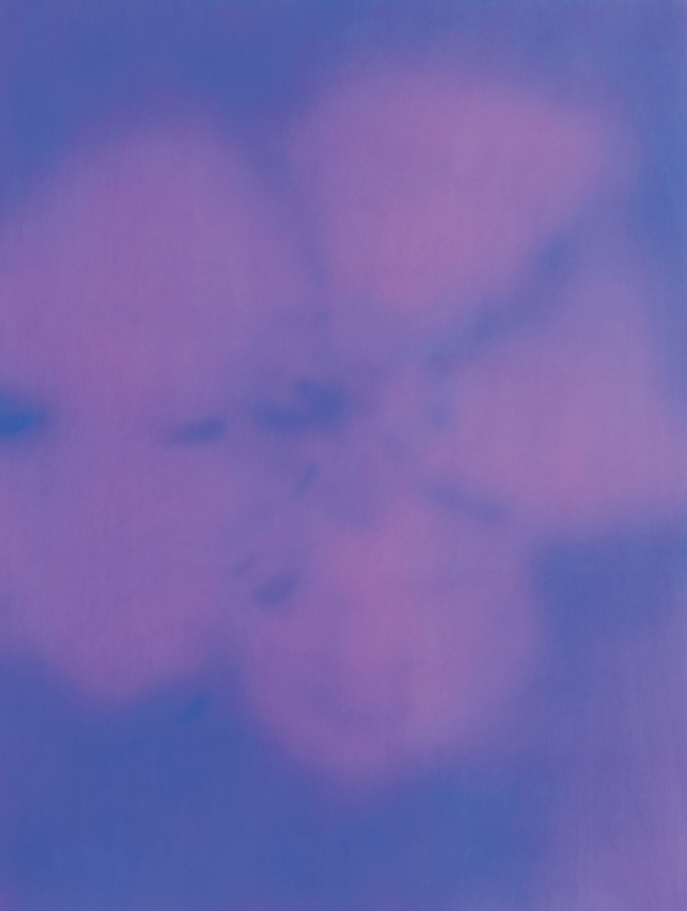Are these portraits? Julien Heintz's "actors" are inspired by screenshots—images captured from the world in an instant, taken from various documentaries, generally between 1920 and 1960. However, these real but nameless people, isolated and extracted from their context, do not play the usual social game and do not adopt the attitudes characteristic of portraiture. Moreover, even when these figures seem to carry an evanescent, increasingly allusive distinctive feature—isolated, fragmented traits reduced to anatomical details—we cannot speak of a true resemblance. At most, it is a residual, generic resemblance.
Faces, then? Undoubtedly, because even when the features blur to the edge of erasure, it takes little to recognize a face. Simplified with a minimum of visual signs, it can be excessively stylized: our mental habit of seeking anthropomorphic forms in any representation allows us to always perceive its configuration, even when it no longer adheres to the dictates of mimicry. We know that the human face is not—no more in the artistic universe than elsewhere—just another object. It remains, always, even despite itself, a subject.
However, in the 20th century, the face, long considered the core of resemblance, relinquishes its aspiration to be the reflection of our appearance. Singularity, "mirror of the soul," or social mirror—these distinctions fade, at least partially, when art begins to doubt its ability to capture the human being.
Henceforth, the human figure enters the era of vagueness. The "face" retains only its outer "architecture," a form more or less oval, more or less stripped of its organic components, its substance. This receding form, whose contours erode and become faintly imprinted traces on the canvas, rejects any certainty. It seems the only Narcissus admitted by modernity is the one who falls to pieces.
Decomposed and depersonalized, the face loses its status as a monument that forever freezes time, consoles the loss of a departed person, and offers a guarantee of eternity.
At first glance, Julien Heintz's work aligns with the likes of Warhol, Chuck Close, Alex Katz, or Zhang Xiao-Gang, among others. For them, it almost always involves works starting from a photographic snapshot, representations of representations, second-degree images. With his "portraits," instead of the unique, glorified, whole face, it is the appearance of the multiple, the trivial, the blurry.
Let’s listen to Heintz, describing his creative process: "I prepare my canvases myself with a mixture of hide glue, marble powder, and water, which forms a thin layer of plaster that I sand down to get a smooth but also fragile surface. I aim to have a unique object that approaches craftsmanship: it’s an important step" (interview on May 3, 2023, with
Elsa Meunier).
The result seems caught in a contradictory motion. On one hand, shiny like a mirror—making the viewer feel they can reflect in it—the image is painted with extreme meticulousness. But, even when the face is stretched horizontally or reduced to a trace, on the border of the figurative and the abstract, the artist pursues this treatment with the same infinite precision. This approach could be seen as an attempt to draw the viewer’s attention to the pictorial work, free from any representation. More likely, the face struggles here with the painting. Caught between readable and unreadable, animated and inert, erasure and affirmation, the fragility of the face lies in a tenuous balance. Tenuous, because these semi-transparent faces, these spectral visions, are as if placed on emptiness or slightly suspended. Portraits without faces, faces without traits, these heads, these faces approach each other in a slow movement of disappearance.
Yet, despite everything, we will never be done with the human figure and its metaphysical shadow. Not without difficulty, for with
Heintz, these deserted identities, these desperately neutral faces, attempt to capture the passerby rather than the person, banality more than singularity. In other words, anonymity.
Text by Itzhak Goldberg













